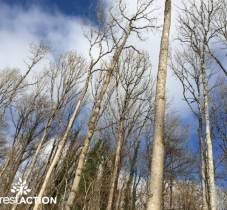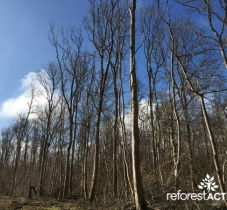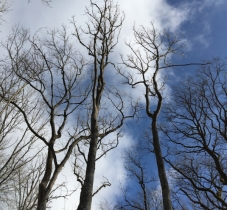Project description
Reforest'Action is working with "Comité des Forêts", a french forestry expert cabinet to reforest an ash stand degraded by Chalara fraxinea fungi.
Project in a blink
- Number of trees to be plant: 11 000
- Plantation areas: 6 hectares
- Species to plant: Oak trees, fruit trees
- Project type: restoration of a forest degraded by fungi disease
- Season of plantation: 2018-2019
Context
Chalara fraxinea is a species of pathogenic fungi responsible for a fungal disease called "chalarose". This disease, wich appeared in Poland and Lithuania in the early 1990s, has been spreading rapidly in Europe since the beginning of the 21st century; it affects the ash trees (Fraxinus excelsior and angustifolia). The fungus is responsible for wilting the leaves, stem necrosis and drying branches, the consequences lead to the death of the affected individual.
According to INRA, the most serious diebacks are in the north and east of France and are moving west and south. In these areas, it is estimated that out of 100 live trees before the disease arrives, only one will remain intact; the others will be weakened and some will die.
Youngest are most vulnerable. Indeed, after eight years of chalarose, only 15% of very young trees remain alive. Older individuals have reduced growth, but ultimately tolerate the disease better and die significantly less.
The massif that Reforest'Action offers you to repopulate is originally composed of ash trees with chalarose. The parcels are located within several ZNIEFF (Natural Zone of Ecological, Fauna and Floristic Interest). This situation accentuates the ecological stakes of the improvement and preservation of this massif.





